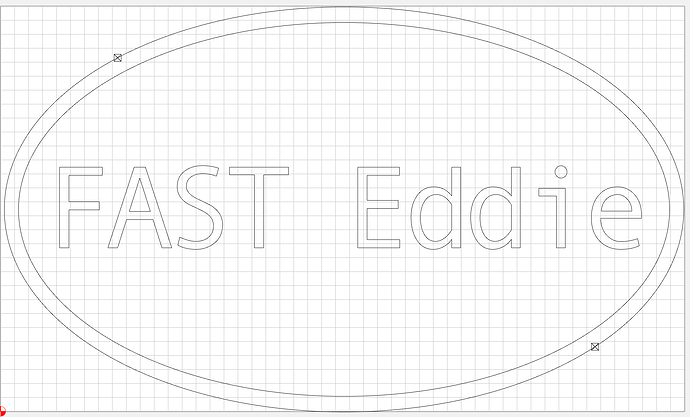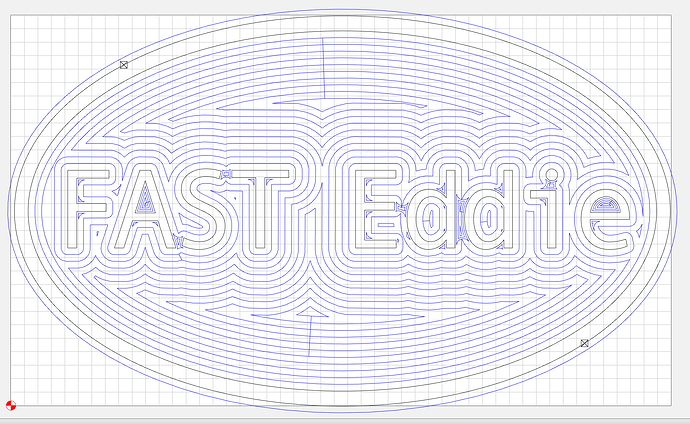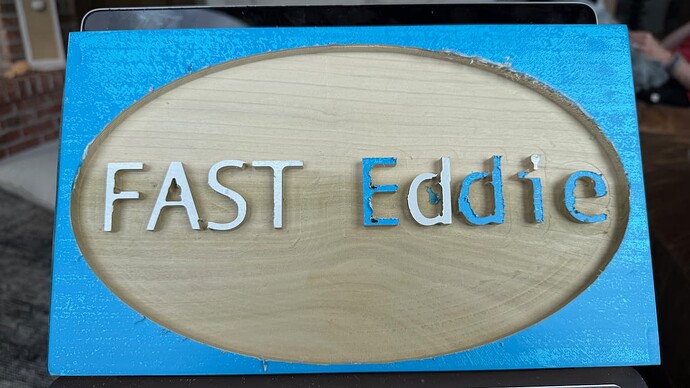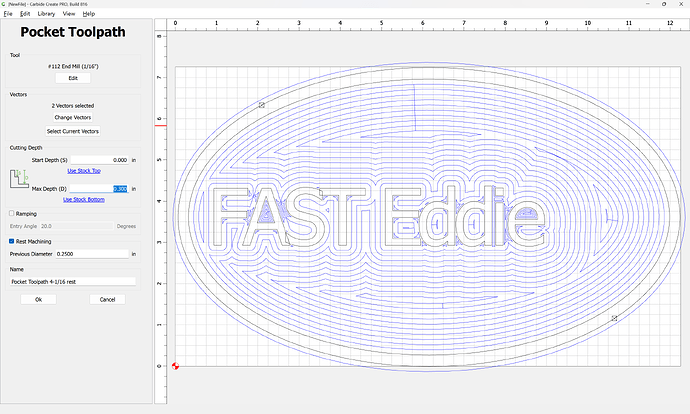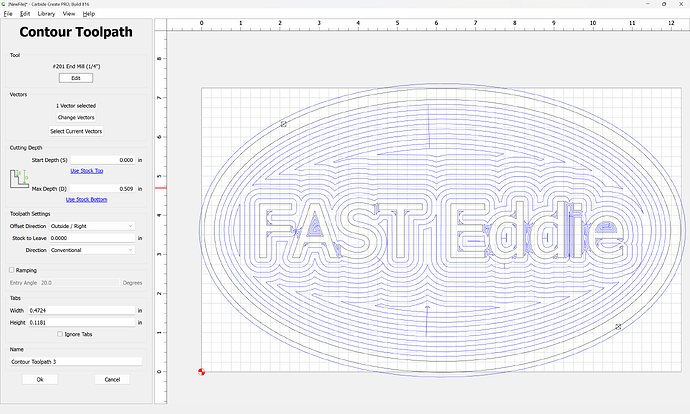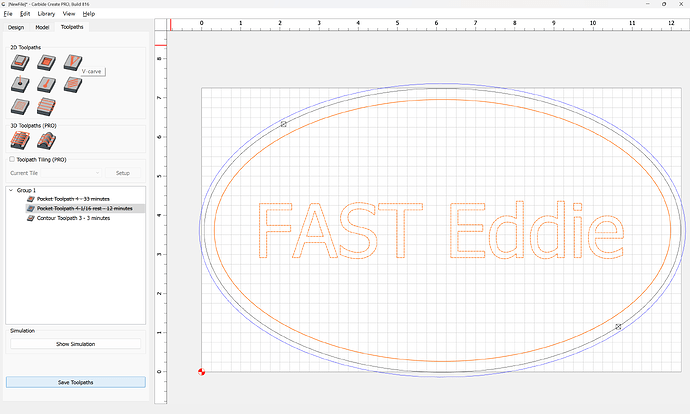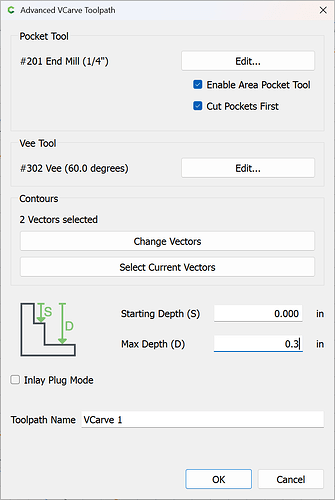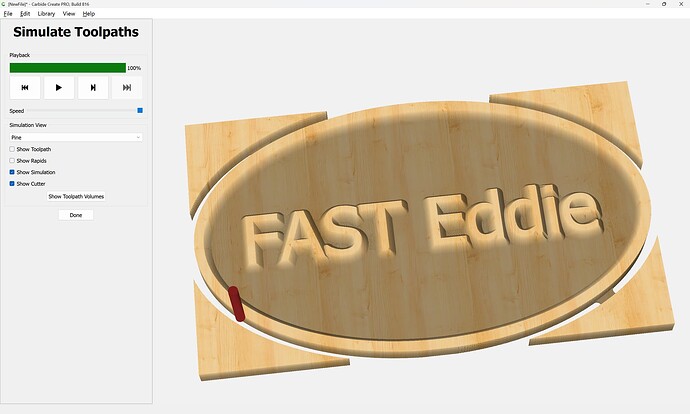ksiminsk
July 18, 2025, 9:45pm
1
1st time posting here! I’m using Carbide create pro and doing what should be a simple sign-- two tools, rest machining but the results are not good.
Here is the design–
Here are the tool paths–
Here is the failure–
As I was watching the initial pocket cut with the #201 end mill, everything looked ok. Then I noticed when I switched to the #112 1/16 end mill, the rest machining was already pocketed out? But then, even the corners appeared to be off. In the Upper case ‘E’ the rest cuts were completely off.
The piece didn’t move a bit-- it’s solidly attached
Fast Eddie-v2.c2d (336 KB)
Appreciate any advice!
WillAdams
July 18, 2025, 10:48pm
2
A #112 only has a Cutting Length of 0.25".
You are cutting to a depth greater than that:
A further concern is you are planning on cutting a slot as narrow as the tool to over twice the tool diameter:
Where possible avoid slotting and add geometry and cut as a pocket
While cutting up vacuum extension wands for this is expedient, it’s a bit problematic given that Shop Vac recently filed for bankruptcy, was bought at the last minute, and production hasn’t caught up.
I need a receptacle for the Sweepy 2.0 dust fitting — one option would be to purchase one from Woodcraft, but Carbide 3D sells blocks of HDPE:
which looks to be just barely big enough for things to fit.
Measuring the hose fitting I get a diameter of ~63.5mm — offsetting that twice we arrive at…
and/or
One technique which is often suggested to avoid slotting is to add geometry around a part which one wishes to cut out and cut as a pocket down to tab depth — here’s one technique for that.
In this case, the project is a bevel gauge which will be cut out of 0.0625" (~1.5mm) thick aluminum:
[bevelgauge]
Due to the narrowness of the angles, an 0.03125" endmill has to be used, so after importing and scaling the file (we will be cutting out one which is 3") we select the perimeter and offset it tw…
and consider leaving a roughing clearance and taking a finishing pass.
One which has a cutting flute length equal to or greater than the thickness of the stock — pretty much any tool should work.
Big thing is the toolpaths — if cutting out, rather than just cutting a slot:
[image]
Offset to the outside by endmill diameter plus 10% or so:
[image]
[image]
[image]
Then cut as a pocket:
[image]
down to tab height or the penultimate pass:
[image]
then move the contour down to below the pocket and start cutting at the bottom of the pocket:
[image]
and…
Why not cut as a V carving?
Redlander
July 18, 2025, 11:28pm
3
Whatever the issue was it was repeatable, look at the cuts on the 2 “d” letters.
system
August 17, 2025, 11:29pm
4
This topic was automatically closed 30 days after the last reply. New replies are no longer allowed.
